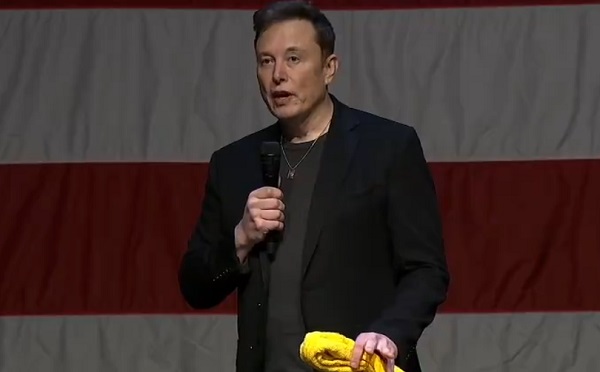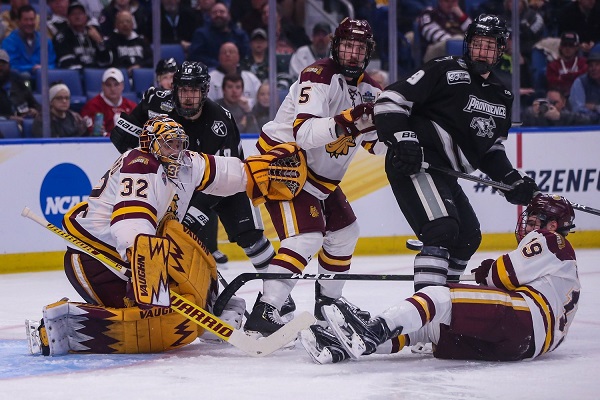Community
We could mitigate our emmissions and save money with a lighter colour or a white roof.

I drove around our new neighbourhoods and saw many black roofs, dark houses and air conditioning units and I wondered about the effects of cladding a house in dark colors. You wear light colors on warm days and black cars are known for high temperatures so what about our houses.
It is becoming increasingly obvious that our climate is warming. I decided to try and better understand what is happening to our Earth. I had heard much about how people need to reduce their consumption of petroleum fuels and start driving electric cars. I had also heard a lot of disagreement about whether it is really practical to expect people to drastically change their daily behaviour, and about whether people are ready or willing to abandon their gasoline-powered cars. I wanted to find out if there was anything that people might be able to do to reduce climate change without having to drastically change their lives.
I learned scientists have found that the Earth’s increasing temperatures are due in part to the loss of snow and ice cover in the polar regions. One manner in which snow and ice cover serves to help keep the Earth cool is by reflecting sunlight. Loss of snow and ice cover reduces the albedo, or solar reflectivity, of the Earth. (Albedo is defined as incident radiation divided by reflected radiation.) When albedo is reduced, less sunlight is reflected away from the Earth. Sunlight that would otherwise be reflected is instead absorbed, further increasing global temperatures and in turn resulting in the melting of more ice and snow. This is called the feedback effect (Wang).
Obviously, it would be helpful if the Earth’s albedo could be reduced. I learned the role the albedo has in the “urban heat island effect.” The urban heat island effect refers to increased temperatures in populated areas that result from reduced surface albedo (Konopacki).
In fact, in one side-by-side comparison, researchers found that the application of white reflective coating to a building reduced summertime air conditioning by 22% (Parker and Barkazski). Scientists have noted that, given the maintenance and replacement needs of most roofing systems, building owners could realize immediate savings in their energy costs by applying high albedo roofing materials in association with their regular roofing maintenance or replacement measures (U.S. Environmental Protection Agency).
In my search on the internet I found that a white structure will cool a playground.
I wondered whether high albedo (white or reflective) roofing could affect the surrounding air temperatures—specifically, whether the air temperatures around buildings with higher albedo roofs would be lower than the temperatures around buildings with dark roofs. If so, perhaps increasing the solar reflectivity of roofs across a city would lower the temperature in that city, helping to counteract the urban heat island effect. Applied on a global scale, could the use of high albedo roofing materials potentially slow, or even counteract, some of the effects of global warming, essentially replacing some of the Earth’s albedo that has been lost due to the loss of ice and snow? Could the feedback effect be reduced? At a minimum, lowered temperatures in urban areas would require less energy to cool the buildings in these areas, which would help in the effort to reduce global warming.
One issue I had not considered in connection with my hypothesis was the potential heating benefit of low albedo roofing. Low albedo roofs absorb heat. With regard to helping to heat the interior of a home during the winter months, the heat-absorbing qualities of low albedo roofing could therefore be a good thing, reducing heating bills. The only problem here in Northern Climates is the fact that our roofs are covered in white snow, Negating the Low Albedo effect.
The idea of painting our roofs white to offset global warming is not new, but a recent study has calculated just how significantly white surfaces could impact greenhouse gas emissions.
The reason for white is simple: white reflects the sun´s rays more than black does. The study´s coauthor, LBNL physicist Hashem Akbari, explained that it takes about 10 square meters or 108 square feet of white roof to offset 1 metric ton of carbon dioxide.
Roofs and pavements cover 50 to 65 percent of urban areas, and most of them are energy-absorbing black or another dark color.
The problem? Those roofs and roadways collectively create what is called the “urban heat island effect” — that is, when a city is measurably warmer than rural areas nearby.
Are reflective white roofs the answer?
Yes, according to a new study. Researchers at the Lawrence Berkeley National Laboratory say that implementing cool roofs and cool pavements in cities around the world can actually make enough of a difference to cool the world.
A quick science lesson: white roofs reflect more of the sun’s rays than black ones, which absorb more of the energy as heat.
The benefits:
Buildings with white roofs stay cooler.
Air conditioned buildings with white roofs need less (and thus less energy) to stay cool.
The heat absorbed by a black roof heats both the building and the air around it.
Black roofs also radiate energy directly into the atmosphere, which is absorbed by clouds nearby. Trapped by the greenhouse effect, it contributes to global warming.
Better still, white roofs could cancel the greenhouse gas effects of up to two years of worldwide carbon dioxide emissions.
That’s important because more than half of the world’s population now lives in cities — and by 2040, it’s predicted that 70 percent of the world’s population will be city slickers.
The researchers used a detailed globe land surface model from NASA’s Goddard Space Flight Center to find the answer. At their fingertips: regional information on surface variables, such as topography, evaporation, radiation, temperature and cloud cover.
The researchers estimated improvement conservatively, and increased the average albedo, or solar reflectance, of all roofs by 0.25 and of pavements by 0.15.
(In other words: they didn’t assume that a black roof, which has an albedo of 0, would be replaced by a pure white roof with an albedo of 1 — just that it would be of a cooler color.)
Looking strictly at the economic costs and benefits of three different roof types—black, white and “green” (or vegetated)—Lawrence Berkeley National Laboratory (Berkeley Lab) researchers have found in a new study that white roofs are the most cost-effective over a 50-year time span. While the high installation cost of green roofs sets them back in economic terms, their environmental and amenity benefits may at least partially mitigate their financial burden.
A new report titled “Economic Comparison of White, Green, and Black Flat Roofs in the United States” by Julian Sproul, Benjamin Mandel, and Arthur Rosenfeld of Berkeley Lab, and Man Pun Wan of Nanyang Technological University in Singapore, provides a direct economic comparison of these three roof types. The study will appear in the March 2014 volume of Energy and Buildings and has just been published online. “White roofs win based on the purely economic factors we included, and black roofs should be phased out,” said study co-author Rosenfeld, a Berkeley Lab Distinguished Scientist Emeritus and former Commissioner of the California Energy Commission.
The study analyzes 22 commercial flat roof projects in the United States in which two or more roof types were considered. The researchers conducted a 50-year life cycle cost analysis, assuming a 20-year service life for white and black roofs and a 40-year service life for green roofs.
A green roof, often called vegetated roofs or rooftop gardens, has become an increasingly popular choice for aesthetic and environmental reasons. Rosenfeld acknowledges that their economic analysis does not capture all of the benefits of a green roof. For example rooftop gardens provide stormwater management, an appreciable benefit in cities with sewage overflow issues, while helping to cool the roof’s surface as well as the air. Green roofs may also give building occupants the opportunity to enjoy green space where they live or work.
Berkeley Lab Distinguished Scientist Emeritus Art Rosenfeld
“We leave open the possibility that other factors may make green roofs more attractive or more beneficial options in certain scenarios,” said Mandel, a graduate student researcher at Berkeley Lab. “The relative costs and benefits do vary by circumstance.”
However, unlike white roofs, green roofs do not offset climate change. White roofs are more reflective than green roofs, reflecting roughly three times more sunlight back into the atmosphere and therefore absorbing less sunlight at earth’s surface. By absorbing less sunlight than either green or black roofs, white roofs offset a portion of the warming effect from greenhouse gas emissions.
“Both white and green roofs do a good job at cooling the building and cooling the air in the city, but white roofs are three times more effective at countering climate change than green roofs,” said Rosenfeld.
White roofs are most cost-effective
The costs and benefits difference stack that has the highest net present value shows the roof type that is most cost-effective. Parentheses around dollar values indicate negative values. (Click for larger image.)
The 50-year life-cycle cost analysis found that even the most inexpensive kind of green roof (with no public access and consisting of only sedum, or prairie grass) costs $7 per square foot more than black roofs over 50 years, while white roofs save $2 per square foot compared to black roofs. In other words, white roofs cost $9 per square foot less than green roofs over 50 years, or $0.30 per square foot each year.
The researchers acknowledge that their data are somewhat sparse but contend that their analysis is valuable in that it is the first to compare the economic costs and energy savings benefits of all three roof types. “When we started the study it wasn’t obvious that white roofs would still be more cost-effective over the long run, taking into account the longer service time of a green roof,” Mandel said.
Furthermore while the economic results are interesting, it also highlights the need to include factors such health and environment in a more comprehensive analysis. “We’ve recognized the limitations of an analysis that’s only economic,” Mandel said. “We would want to include these other factors in any future study.”
Black roofs pose health risk
For example, black roofs pose a major health risk in cities that see high temperatures in the summer. “In Chicago’s July 1995 heat wave a major risk factor in mortality was living on the top floor of a building with a black roof,” Rosenfeld said.
For that reason, he believes this latest study points out the importance of government policymaking. government has a role to ban or phase out the use of black or dark roofs, , because they pose a large negative health risk,” he said.
Rosenfeld, who started at Berkeley Lab in the 1950s, is often called California’s godfather of energy efficiency for his pioneering work in the area. He was awarded a National Medal of Technology and Innovation by President Obama in 2012, one of the nation’s highest honors.
Rosenfeld has been a supporter of solar-reflective “cool” roofs, including white roofs, as a way to reduce energy costs and address global warming. He was the co-author of a 2009 study in which it was estimated that making roofs and pavements around the world more reflective could offset 44 billion tons of CO2 emissions. A later study using a global land surface model found similar results: cool roofs could offset the emissions of roughly 300 million cars for 20 years.
Cool roofs have been proliferating.
In Red Deer it might start with educating home owners about the benefits of a white roof in costs and environment. Builders and developers could recommend lighter colors in roofing and siding. There is a lot that we can do if we want to. Do we want to?
Community
Festival of Trees tickets on sale! Update from the Red Deer Regional Health Foundation

Festival of Trees tickets are on sale now! Get ’em while they’re hot!
|
|
|
|
|
|
|
|
|
|
|
Community
First Battle of Alberta this NHL season to bring big boost to Child Advocacy Centre!

From the Central Alberta Child Advocacy Centre
The Edmonton Oilers MEGA 50/50 is BACK in support of three amazing organizations 

By purchasing your Oilers MEGA 50/50 tickets today, you’re helping to support the CACAC, along with Little Warriors and Zebra Child & Youth Advocacy Centre .
Purchase before 1PM to be eligible for all 4 early bird prizes, including a $500 Esso card, 2 PCL Loge Arkells tickets for November 1, $1000 for Alberta Beef, and $10,000 CASH!
Early Bird draws!
Buy before 1:00 for $500 Esso card
Buy before 7:00 for 2 PCL Loge Arkells tickes
Buy before 7:30 for $1,000 Alberta Beef
Buy before 8:00 for $10,000 Cash!
THANK YOU EDMONTON OILERS!
-

 ESG1 day ago
ESG1 day agoCan’t afford Rent? Groceries for your kids? Trudeau says suck it up and pay the tax!
-

 International1 day ago
International1 day agoElon Musk praises families on X: ‘We should teach fear of childlessness,’ not pregnancy
-

 Business2 days ago
Business2 days agoCarbon tax bureaucracy costs taxpayers $800 million
-

 Addictions1 day ago
Addictions1 day agoBC Addictions Expert Questions Ties Between Safer Supply Advocates and For-Profit Companies
-

 John Stossel1 day ago
John Stossel1 day agoGreen Energy Needs Minerals, Yet America Blocks New Mines
-

 Bruce Dowbiggin2 days ago
Bruce Dowbiggin2 days agoCHL Vs NCAA: Finally Some Sanity For Hockey Families
-

 MAiD2 days ago
MAiD2 days agoOver 40% of people euthanized in Ontario lived in poorest parts of the province: government data
-
DEI2 days ago
University System of Georgia to ban DEI, commit to neutrality, teach Constitution
















